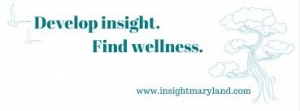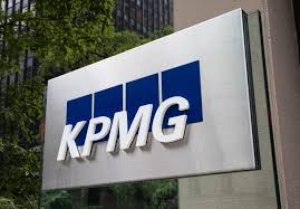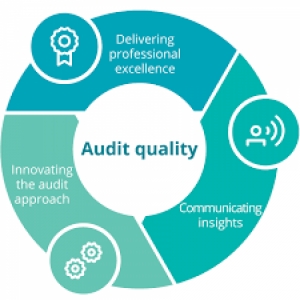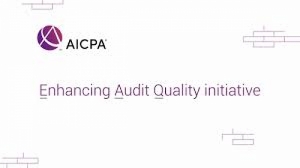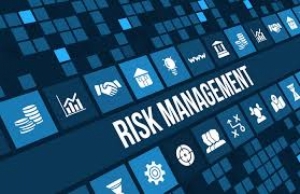عرض العناصر حسب علامة : التدقيق والمراجعة
الأربعاء, 06 نوفمبر 2019 11:27
كيف يمكن للجان المراجعة الإستفادة من التكنولوجيا
نشر في
تكنولوجيا المعلومات
الأحد, 03 نوفمبر 2019 10:14
عندما تجتمع الثقة مع البصيرة
نشر في
تكنولوجيا المعلومات
الأربعاء, 23 أكتوبر 2019 09:55
تغريم كي بي ام جي بسبب اخطاء و مغالطات في عمليات التدقيق و المراجعة
نشر في
محاسبة و مراجعة
موسومة تحت
الأربعاء, 23 أكتوبر 2019 09:43
تعلن شركة كي بي أم جي عن بنية تدقيق و مراجعة جديدة - لكن هل هذا يكفي؟
معلومات إضافية
-
المحتوى بالإنجليزية
KPMG UK announce new audit structure – but is it enough?
KPMG UK will change their executive governance structure to separate audit from the rest of the business – but critics have said the changes do not go far enough.
The changes will see KPMG create an Audit Executive Committee in attempt to deliver on some of the recommendations made by the CMA and BEIS committee, but they do not represent a full separation of the firm’s audit practice from the rest of the business.
Campaigner professor Richard Murphy, from City University, was sceptical about the proposed restructuring and called for KPMG to “entirely separate its audit firm from the rest of its activities.”
“I welcome KPMG recognising that there is an issue to address with regard to audit independence. I regret that they are addressing it the wrong way. There is no way that any number of so-called Chinese walls will restore any credibility to the Big Four on this issue,” he said.
KPMG UK chairman Bill Michael insisted that the firm was committed to reform. “We’re serious about making changes to restore trust in audit. We understand concerns that the profession’s operating models have become too opaque and we are taking action to tackle these.”
The Audit Executive Committee will be headed by Jon Holt, who will become head of audit. The restructuring is intended to enable faster management decisions to be made by those closest to the firm’s clients.
“The sole aim and focus of our chair of audit, our new audit executive and our Audit Oversight Committee is to drive audit quality, via strong leadership, good governance, rigorous controls, independent decision-making and separate performance management from the rest of the firm,” he added.
However, Prof. Murphy refused to believe that KPMG could be trusted to regulate themselves adequately. “When it is apparent that they cannot comply with existing externally imposed audit regulations, no one will believe that they will respect those that they claim that they will voluntarily apply to themselves to save their own corporate skin.”
نشر في
محاسبة و مراجعة
موسومة تحت
الإثنين, 14 أكتوبر 2019 11:59
التدقيق و المراجعة والذكاء الاصطناعي الخطوات الأولى المبدئية لتحسين جودة المراجعة وكفاءتها
معلومات إضافية
-
المحتوى بالإنجليزية
Audit and AI – tentative first steps to improve audit quality and efficiency
A survey of ACCA members and affiliates about their understanding of terms such as artificial intelligence (AI), machine learning (ML), natural language processing (NLP), data analytics and robotic process automation (RPA), revealed technology’s ability to renew processes that improve audit quality and increase efficiency.
The report reveals how technology is also a catalyst that will help shift the focus of the audit process from a retrospective view to one which is prospective. It also assesses the technologies having most impact on the audit profession as we know it today.
Drawing on existing research and exploring the views of leading practitioners, it provides an understanding of how the changing business environment is shaping technological change in auditing – summarising how different technologies could be expected to impact its future and what this means for auditors as people.
Key findings in the report also revealed:
• Among the available technologies, data analytics is currently the most mature and is currently used by most firms
• The audit profession is still at a very early stage with AI and has not embedded it as deeply as it could
• The human relationship between client and auditor remains important: not everything can be replaced by technology
• Auditors will need to be more adaptable to change in future
ACCA’s report Closing the Expectation Gap in Audit found that 55% of the general public across 11 countries believe that, if auditors followed the requirements of existing auditing standards, they could prevent corporate failure.
Furthermore, 70% believe that audit should evolve to prevent corporate failure. Although some may reasonably argue that such demands are unrealistic, technology may help to satisfy the public demand, at least partly, in future.
Maggie McGhee, executive director – governance at ACCA, said: ‘Technology offers the ability both to improve the quality of audit and to add value to it: audit is moving from being a reactive, backward-looking exercise to a proactive, predictive, forward-looking one, working in real time.
‘As such, it provides an opportunity to help clients by providing timely insights. Even in its traditional context, technology now offers an opportunity to produce higher-quality audits that better serve for their existing purpose.
‘Nonetheless, if AI and related technologies are fully implemented, it could raise questions about the auditor’s independence.
‘We hope Audit and Technology provides insights for both businesses and auditors themselves on how they may adapt most effectively in the face of significant change.’
Simon Grant, Group Executive International Development and Advocacy & Professional Standing at CA ANZ, said: ‘If we can anticipate the possible impacts of technology and harness it so we understand the benefits to the accounting profession, technological change could then be such an empowering opportunity rather than a challenge for our profession.’
نشر في
محاسبة و مراجعة
موسومة تحت
الثلاثاء, 08 أكتوبر 2019 10:41
المعهد الأمريكي للمحاسبين القانونيين يلغي التوجيه بشأن عمليات التدقيق والمراجعة في الفترة السابقة
معلومات إضافية
-
المحتوى بالإنجليزية
AICPA rescinds guidance on prior-period audits
Update: The AICPA will delete TQA 8100.03 from its literature by the end of May 2019 due to unintended misinterpretation.
A newly revised AICPA Technical Question and Answer (TQA) provides nonauthoritative guidance for performing an audit and reporting on an entity’s prior-period financial statements.
For such audits, TQA 8100.03 states that the auditor should use, in their entirety, the auditing standards and form of the auditor’s report that are in effect at the time the audit is performed — unless an auditing standard provides transitional guidance regarding its implementation.
The TQA explains that because the previous auditing standards have been superseded by the current auditing standards, they are no longer in effect when the audit is performed.
The revised TQA guidance is timely because several new auditing standards are scheduled to become effective for audits of financial statements for periods ending on or after Dec. 15, 2020.
These include new standards on auditor reporting, and on financial statement audits of employee benefit plans subject to the Employee Retirement Income Security Act.
نشر في
محاسبة و مراجعة
موسومة تحت
الثلاثاء, 08 أكتوبر 2019 07:45
اربع خطوات أساسية للمدققين و المراجعين في تقييم مخاطر التكنولوجيا
على ما يبدو أن التكنولوجيا الناشئة قد جلبت مجموعة لا نهاية لها من المخاطر الجديدة للعملاء الذين يجلبون محاسبين قانونيين لإجراء عمليات التدقيق والمراجعة.
معلومات إضافية
-
المحتوى بالإنجليزية
4 key steps for auditors in assessing technology risks
Emerging technology has brought a seemingly endless set of new risks to the clients that engage CPAs to perform audits.
Unauthorized personnel can wreak havoc, data can get lost or become inaccessible, and third-party providers can be unreliable. Meanwhile, avoiding all these risks by avoiding the latest technology also can put a client at risk of failing due to a competitive disadvantage.
Some of the challenges associated with technology are addressed in a new Center for Audit Quality (CAQ) resource for auditors, audit committees, and management, Emerging Technologies, Risk, and the Auditor’s Focus. (The CAQ is affiliated with the AICPA.)
According to the publication, key steps for auditors in a changing technology environment include:
• Maintaining sufficient professional skepticism when reviewing management’s risk assessment for new systems.
• Understanding the direct and indirect effects of the new technology and determining how its use by the entity affects that auditor’s overall risk assessment.
• Understanding how the technologies impact the flow of transactions, assessing the completeness of the in-scope internal control over financial reporting systems, and designing a sufficient and appropriate audit response.
• Assessing the appropriateness of management’s processes to select, develop, operate, and maintain controls related to the organization’s technology based on the extent the technology is used.
The publication states that auditors also should gain a holistic understanding of changes in the industry and the IT environment before designing audit procedures. And if specialized skills are needed to determine the impact of new technologies, auditors may need to involve a subject-matter expert.
نشر في
تكنولوجيا المعلومات
موسومة تحت



